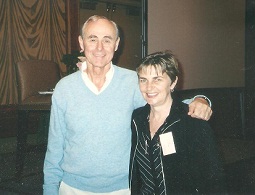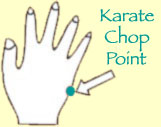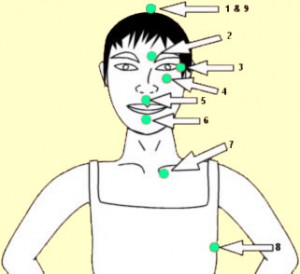Marg’s PhD Research
Margaret is evaluating the effects of Emotional Freedom Techniques (EFT) or Tapping on primary school students as part of her PhD studies at Charles Darwin University. Click on the link for details.
What is EFT (Emotional Freedom Technique)?
Emotional Freedom Technique, or EFT, is the set of energy-based techniques that can relieve emotional issues and physical symptoms and can improve performance in your life. It belongs to the mind-body approach of psychology known as Energy Psychology.
EFT is a new way of thinking about healing and is supported by evidence that shows positive statistical results. American physician, Chuck Gebhardt has stated: “Nothing in my traditional training in Anatomy, Physiology or Pathology even hinted at what I am now witnessing (with EFT)”.
Emotional Freedom Technique is a form of energy therapy that is used to gain relief from emotional and physical problems. Based on new discoveries involving the body’s energy system, the techniques work by tapping on energy meridians. It is similar to acupuncture or acupressure in that it uses the body’s meridians to release negative energy, BUT with no needles and no heavy pressure on points – just the gentle tapping of your own fingertips – and the results are often amazing! Anyone can learn these simple self-healing and life transforming techniques.
LISTEN to the podcast on EFT – Emotional Freedom Technique – by clicking on the link.
In this interview by Sandhan I talk about the origins of EFT, and take you through the steps of the techniques. In this particular session, you will learn how to apply EFT for breathing. Tune in and learn how to use the self-applied Emotional Freedom Technique, and at the same time improve the quality of your breathing!
Why does it work?
EFT is based on the premise that the cause of all negative emotions is a disruption in the body’s energy system. It has been found to be clinically effective in thousands of cases for a wide range of emotional issues such as trauma & abuse, stress & anxiety, fears & phobias, depression, and addictions. The techniques have also been remarkably effective in treating physical symptoms including headaches, body pains and breathing difficulties. Most people achieve noticeable improvement or complete healing of their particular issue. Please Note: EFT does not replace medical advice and you should continue to consult with your medical practitioner on issues of concern.EFT in a few words:
- Often works where nothing else will.
- Usually rapid, long lasting and gentle.
- No drugs or equipment involved.
- Easily learned by anyone.
- Can be self applied.
History of EFT
EFT was developed in the 1990′s by Gary Craig, a trained engineer who, prior to his retirement, worked as a personal performance coach in California. Gary derived EFT from studying Thought Field Therapy (TFT) with tutor Dr Roger Callahan. Gary has been very generous in passing on his knowledge and in working towards everyone becoming informed about the gift of EFT. Gary’s web page is www.emofree.com
The Association for Comprehensive Energy Psychology (ACEP) is a professional organisation that focuses on Energy Psychology and EFT – its research, education and practice. It is interesting to note a form of EFT is currently used and has been used in Chinese medicine and for general health and wellbeing among the Asian population for thousands of years.
Margaret’s Training in EFT
Margaret has trained with Gary Craig, founder of EFT in Chicago, and she has undertaken extensive additional training in EFT and other energy therapies:
- In the United States with Dr Carol Look, Dr Joseph Mercola, Dr Susan Lee Smith
- In Australia with Steve Wells and Dr David Lake
- In Australia with Ann Adams and several EFT Masters
Margaret is qualified in Advanced Training in EFT and has been conducting training in EFT since 2004. She also has experience in using EFT with clients for a wide range of issues, including stress, anxiety, depression, relationship, conflict, anger, cancer, IBS, trauma, pain, performance, sleep, fatigue. EFT can be used for so many conditions and issues.
Instructions for Shortcut version of EFT
EFT is carried out by tapping points on the body that correspond to acupuncture meridian points. For the shortcut version, which almost always produces similar results to the longer version, eight different points on the body are tapped in a single sequence of EFT. Note: one point, the Top of the Head is tapped twice in the sequence, at the beginning and the end, giving a total of 9 points in the sequence.
1. Assessment of Intensity:
Assess your level of intensity on a scale of 0-10 (0 being no intensity and 10 being the worst intensity you can imagine), of the problem or negative emotion as you experience it now. Note the number you have given it.
2. The Set Up:
Tap the Karate chop point (shown in the diagram) while saying: “Even though I have this ____________ (state the problem, e.g. “anxiety about my exams”; or “headache”), I deeply and completely accept myself”. Repeat three times. You need to say this whether you believe it or not. Try to be as specific as you can with your problem
3. The Sequence:
1. Top of Head 2. Eyebrow 3. Side of Eye 4. Under Eye 5. Under Nose 6. Chin 7. Collar bone 8. Underarm 9.Top of HeadFollow the tapping points from 1-9 as shown in the diagram. At each point, tap between 5 and 10 times (this does not have to be exact) whilst saying a reminder phrase at each point. (A reminder phrase is taken from the Set Up wording which describes your problem or negative emotion, e.g. “this anxiety”, or “this headache”). You can tap the points on either side of the body, or even better, on both sides at the same time.
4. Take a deep breath and assess your level of intensity again.
If there is remaining intensity, repeat the process, this time adjusting your wording to reflect the remaining intensity, e.g.: “Even though I still have some of this exam anxiety, (or headache) left, I deeply and completely accept myself”. Repeat 3 times.
For the reminder phrase that accompanies the sequence, you can say, “this remaining anxiety” or “this remaining headache.” Continue repeats of the process until your intensity has reached 0 (zero).
5. If the problem still persists:
There could be more aspects to the problem that have not been addressed. Try persisting with EFT to unravel these aspects, or it may be helpful to follow through with your Counsellor or EFT practitioner.


